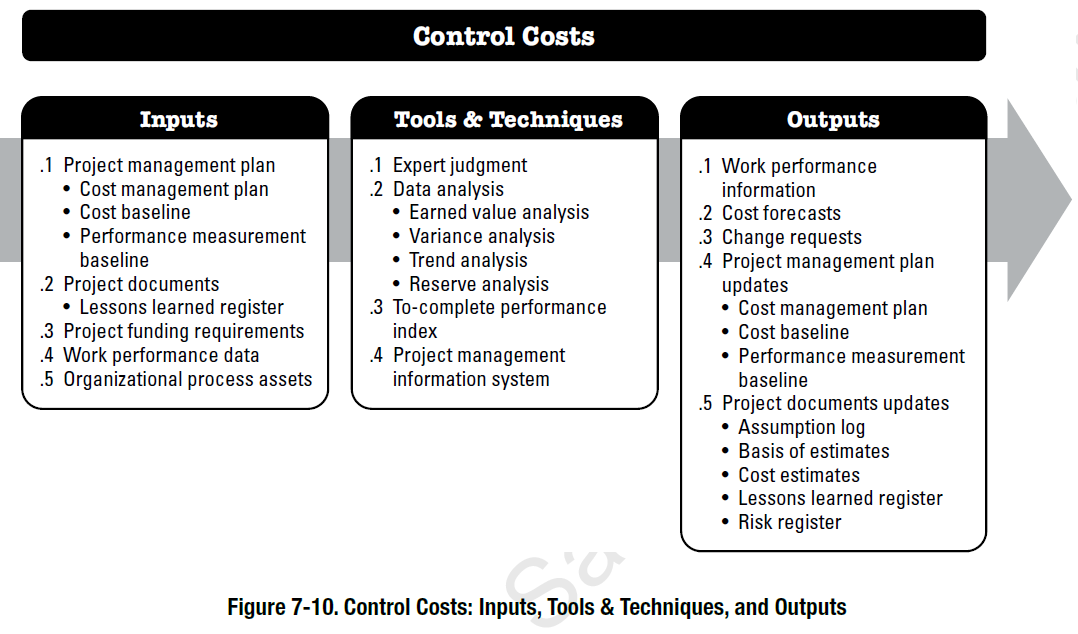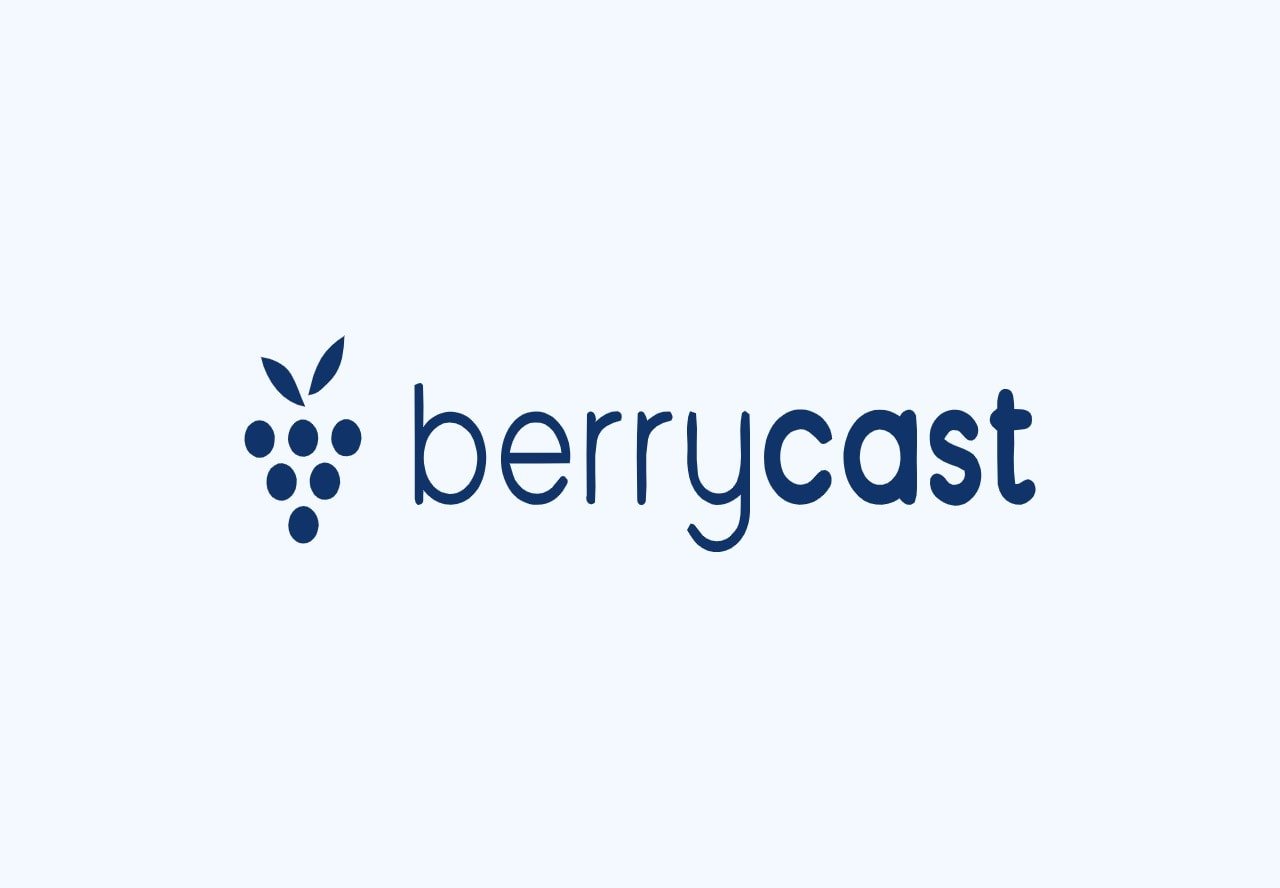Managing costs is vital for any business’s success. Effective cost management tools and techniques can significantly impact your bottom line.
In today’s competitive market, controlling expenses is more important than ever. Companies need reliable methods to track and manage costs efficiently. Cost management tools and techniques provide the structure and insights necessary to make informed financial decisions. They help businesses allocate resources wisely, reduce waste, and improve profitability.
Whether you run a small startup or a large corporation, understanding these tools can enhance your financial strategy. This blog post will guide you through the essential cost management tools and techniques, helping you achieve better financial control and stability. Stay with us to learn how to make your business more cost-effective.

Introduction To Cost Management
Cost management is a crucial aspect of running a business. It involves planning and controlling the budget of a project or a business. Effective cost management ensures that a business stays within its budget and increases its profitability. This practice helps identify where a business can save money and improve efficiency.
Importance Of Cost Management
Understanding the importance of cost management is essential for any business. It helps in:
- Maintaining control over the budget
- Ensuring financial stability
- Identifying areas for cost reduction
- Improving decision-making processes
- Enhancing overall business performance
Without proper cost management, businesses may face financial difficulties. They may struggle to allocate resources efficiently and meet their financial goals. Thus, cost management is key to long-term success.
Impact On Business Profitability
Effective cost management has a direct impact on business profitability. By controlling costs, businesses can maximize their profits. Here are some ways cost management impacts profitability:
- Reduces unnecessary expenditures
- Optimizes resource allocation
- Increases efficiency and productivity
- Improves cash flow management
- Enhances competitive advantage
For instance, a company that manages its costs well can offer lower prices. This attracts more customers and increases sales. Therefore, cost management is not just about saving money. It is also about creating opportunities for growth and profitability.
| Cost Management Benefits | Description |
|---|---|
| Budget Control | Keeps expenses within the planned budget. |
| Financial Stability | Ensures the business remains financially healthy. |
| Cost Reduction | Identifies and eliminates unnecessary costs. |
| Decision Making | Provides data to make informed financial decisions. |
| Business Performance | Improves overall efficiency and profitability. |
In summary, cost management plays a vital role in a business’s success. It is necessary for maintaining financial health and achieving profitability.
Budgeting Techniques
Effective budgeting techniques are crucial for any business striving to manage costs efficiently. These techniques provide a roadmap for allocating resources, ensuring financial stability, and achieving strategic goals. Among the various methods, Zero-Based Budgeting and Flexible Budgeting stand out due to their unique approaches. Let’s explore these techniques in detail.
Zero-based Budgeting
Zero-Based Budgeting (ZBB) starts from a “zero base.” Each expense must be justified for each new period. Unlike traditional budgeting, ZBB does not rely on previous budgets. Instead, every department builds their budget from scratch. This method promotes efficiency and cost-effectiveness.
Key benefits of Zero-Based Budgeting include:
- Enhanced Cost Control: Every expense needs approval, reducing unnecessary spending.
- Alignment with Goals: Resources are allocated based on current needs and priorities.
- Increased Accountability: Managers must justify every expense, promoting responsibility.
Despite its advantages, ZBB can be time-consuming and complex. It requires detailed analysis and extensive documentation. Therefore, it is best suited for organizations ready to invest time and effort into meticulous planning.
Flexible Budgeting
Flexible Budgeting adjusts according to actual activity levels. It is dynamic and allows for variations in costs and revenues. This type of budgeting is ideal for businesses with fluctuating sales or production volumes.
Advantages of Flexible Budgeting include:
- Adaptability: Budgets can change with varying business conditions.
- Realistic Projections: Adjusts for actual performance, providing accurate financial insights.
- Better Control: Allows for quick adjustments, improving financial control.
Flexible Budgeting involves preparing budgets for different activity levels. It helps in comparing actual performance with budgeted figures, enabling timely corrective actions.
Consider a manufacturing company that uses flexible budgeting:
| Activity Level | Budgeted Cost |
|---|---|
| 50% Capacity | $100,000 |
| 75% Capacity | $150,000 |
| 100% Capacity | $200,000 |
This table illustrates how costs adjust with different production levels. Flexible budgeting is especially useful for managing variable costs effectively.
Cost Estimation Methods
Managing project costs effectively is crucial for success. Different cost estimation methods help you predict project expenses accurately. Each method has its strengths and best-use scenarios. Understanding these methods can significantly improve your cost management strategy.
Analogous Estimating
Analogous estimating uses historical data from similar projects to estimate costs. It’s a quick method and works well in the early stages of a project. This method relies on expert judgment and past project data to create a cost estimate.
- Advantages:
- Quick and easy to use
- Requires minimal project details
- Based on real-world data
- Disadvantages:
- Less accurate than other methods
- Relies heavily on expert judgment
- May not account for unique project aspects
Parametric Estimating
Parametric estimating uses statistical data and mathematical models to estimate costs. This method is more accurate and relies on key project variables. It involves using historical data and project-specific parameters to develop a cost estimate.
- Advantages:
- More accurate than analogous estimating
- Uses quantifiable data
- Can be applied to various project types
- Disadvantages:
- Requires detailed project information
- Can be time-consuming
- Needs specialized knowledge to develop models

Credit: www.researchgate.net
Cost Control Strategies
Effective cost control strategies are crucial for any business. They help manage expenses and ensure profitability. By implementing these strategies, organizations can identify areas of overspending and take corrective actions. This section will cover two key aspects of cost control: variance analysis and cost monitoring.
Variance Analysis
Variance analysis is a method used to identify the difference between actual and budgeted costs. It helps businesses understand why these differences occur. This technique involves comparing actual financial performance with the budgeted figures. The differences are called variances.
- Favorable variances occur when actual costs are lower than budgeted costs.
- Unfavorable variances happen when actual costs exceed budgeted costs.
To conduct a variance analysis, follow these steps:
- Identify the budgeted costs for a specific period.
- Record the actual costs incurred during the same period.
- Calculate the variance by subtracting budgeted costs from actual costs.
- Analyze the reasons for any significant variances.
Regular variance analysis helps businesses stay on track with their financial goals. It allows timely adjustments to avoid overspending.
Cost Monitoring
Cost monitoring is the continuous tracking of expenses to ensure they remain within budget. This practice involves the use of various tools and techniques to keep a close watch on spending.
| Tool | Description |
|---|---|
| Expense Reports | Detailed reports of daily, weekly, or monthly expenses. |
| Budget Tracking Software | Software tools designed to track and manage budgets. |
| Financial Dashboards | Visual representations of financial data in real-time. |
Cost monitoring involves several key activities:
- Regularly reviewing expense reports.
- Using budget tracking software.
- Setting up financial dashboards for real-time insights.
By implementing these activities, businesses can quickly identify and address any financial issues. Effective cost monitoring ensures that spending aligns with the budget, helping to maintain financial health.
Expense Tracking Tools
Keeping track of expenses is crucial for any business. Expense tracking tools help you monitor and manage your spending. They offer insights into where your money goes. This guide covers two main types of tools: Software Solutions and Manual Tracking.
Software Solutions
Software solutions make expense tracking easy and efficient. They automate many tasks. You can track expenses in real-time, generate reports, and set budgets. Here are some popular options:
- QuickBooks: A versatile tool for businesses of all sizes. It helps manage invoices, track expenses, and generate financial reports.
- Expensify: Ideal for employees who travel frequently. It simplifies receipt scanning and integrates with accounting software.
- Zoho Expense: Offers comprehensive features for expense reporting, including multi-currency support.
These software tools often come with mobile apps. This allows you to track expenses on the go. They also offer cloud storage for receipts and documents. This ensures you never lose important information.
Manual Tracking
Manual tracking involves recording expenses by hand. This can be done using spreadsheets or paper logs. While it requires more effort, it has its benefits.
Here is a simple method for manual tracking:
- Create a table with columns for date, description, category, and amount.
- Record every transaction as it occurs.
- Review and categorize expenses weekly.
- Summarize monthly totals and compare with your budget.
Manual tracking allows for more personal involvement. It helps in understanding every detail of your spending. It is also cost-effective since it doesn’t require any software purchase.
While manual tracking can be time-consuming, it is valuable for those who prefer a hands-on approach. It provides a deeper insight into your financial habits.
Cost Reduction Techniques
Cost reduction techniques help businesses save money and increase profits. They focus on minimizing expenses without compromising quality. Using the right strategies can make a big difference.
Lean Management
Lean Management aims to reduce waste and increase efficiency. It focuses on delivering value to customers with fewer resources. Here are some key practices:
- Value Stream Mapping: Identify and analyze the flow of materials and information.
- 5S Methodology: Organize the workspace for efficiency and effectiveness.
- Just-In-Time (JIT): Produce only what is needed, when it is needed.
- Continuous Improvement (Kaizen): Make small, incremental changes regularly.
Lean Management improves productivity and reduces costs. It creates a more agile and responsive organization.
Outsourcing
Outsourcing involves hiring external companies to handle certain tasks. It helps businesses focus on core activities. Common areas for outsourcing include:
- IT Services: Network management, software development, and technical support.
- Human Resources: Payroll processing, recruitment, and employee training.
- Customer Support: Call centers and email support.
- Manufacturing: Producing parts or products at a lower cost.
Outsourcing reduces overhead costs and increases efficiency. It provides access to expert services and advanced technology.
Forecasting And Planning
Effective cost management involves accurate forecasting and planning. These processes help businesses predict future costs, allocate resources, and make informed financial decisions. Utilizing advanced tools and techniques enhances the accuracy of forecasts and the efficiency of planning. Two essential techniques in this area are Predictive Analytics and Scenario Planning.
Predictive Analytics
Predictive analytics uses historical data to forecast future trends. This technique employs statistical algorithms and machine learning to analyze past patterns. Businesses can anticipate future expenses and prepare accordingly.
Key benefits of predictive analytics include:
- Improved accuracy in cost predictions
- Identification of potential cost drivers
- Enhanced decision-making capabilities
A simple example of predictive analytics is using past sales data to forecast future revenue. This helps in budgeting and resource allocation.
Scenario Planning
Scenario planning involves creating different future scenarios based on various assumptions. This technique prepares businesses for multiple possible outcomes. It helps in identifying risks and opportunities in advance.
Benefits of scenario planning:
- Understanding the impact of different variables on costs
- Flexibility in adapting to unforeseen changes
- Better strategic planning
For instance, a company might plan for scenarios like increased material costs or changes in market demand. This allows for quicker adjustments to their strategies.
Both predictive analytics and scenario planning are crucial for effective cost management. They provide businesses with the insights needed for strategic planning and financial stability.

Credit: www.projectengineer.net
Performance Measurement
Performance measurement is crucial for effective cost management. It helps businesses track and evaluate their financial health. By using key performance indicators and benchmarking, companies can ensure they stay on track with their financial goals.
Key Performance Indicators
Key Performance Indicators (KPIs) are measurable values. They show how effectively a company is achieving key business objectives. Some common KPIs in cost management include:
- Cost Variance: The difference between budgeted and actual costs.
- Return on Investment (ROI): Measures the profitability of investments.
- Cost Performance Index (CPI): A ratio of earned value to actual costs.
- Operating Expense Ratio (OER): Compares operating expenses to total revenue.
These KPIs provide insights into financial performance. They help identify areas needing improvement.
Benchmarking
Benchmarking involves comparing your business processes and performance metrics to industry standards or best practices. It helps identify strengths and weaknesses. Here is a simple example of benchmarking process:
| Step | Description |
|---|---|
| 1 | Identify what to benchmark. |
| 2 | Choose companies or standards to compare against. |
| 3 | Gather data on performance metrics. |
| 4 | Analyze the data and identify gaps. |
| 5 | Develop improvement strategies. |
Benchmarking helps in setting realistic targets. It drives continuous improvement and cost efficiency.
Challenges In Cost Management
Cost management is vital for business success. It involves planning, monitoring, and controlling costs. But it’s not easy. Many businesses face challenges in this area. Let’s explore common pitfalls and best practices.
Common Pitfalls
Businesses often encounter several common pitfalls in cost management. These challenges can derail even the best plans.
- Underestimating Costs: Estimating costs too low can lead to budget issues.
- Lack of Monitoring: Without regular tracking, costs can spiral out of control.
- Poor Communication: Miscommunication can cause errors and increased costs.
- Ignoring Market Changes: Failing to adapt to market shifts can impact costs.
Best Practices
Adopting best practices can help overcome these challenges.
- Accurate Estimation: Use historical data and expert input for better estimates.
- Regular Monitoring: Track expenses frequently to stay on top of costs.
- Clear Communication: Ensure all team members understand the cost management plan.
- Market Analysis: Stay updated on market trends to adjust costs accordingly.
Implementing these best practices can improve cost management. It keeps expenses under control and ensures business success.

Credit: fastercapital.com
Future Trends In Cost Management
The landscape of cost management is evolving rapidly. Emerging technologies and changing priorities are reshaping how businesses manage costs. Let’s explore some of the future trends in cost management.
Ai And Automation
Artificial Intelligence (AI) and automation are transforming cost management. These technologies streamline processes and reduce errors. AI can analyze vast amounts of data quickly. This helps in making informed decisions. Automation takes over repetitive tasks. This saves time and reduces labor costs.
Consider the following benefits of AI and automation in cost management:
- Real-time data analysis: AI provides instant insights into cost trends.
- Error reduction: Automation minimizes human errors in financial reporting.
- Cost forecasting: AI predicts future costs with high accuracy.
These tools enhance efficiency and accuracy. They are essential for modern cost management.
Sustainability Focus
Businesses are increasingly focusing on sustainability. Cost management now includes environmental considerations. Sustainable practices can lead to cost savings. For example, reducing energy consumption lowers utility bills. Using sustainable materials can reduce waste and improve profitability.
Here are some ways sustainability impacts cost management:
- Energy efficiency: Invest in energy-saving technologies.
- Waste reduction: Implement recycling programs.
- Resource management: Optimize the use of raw materials.
Sustainability is not just a trend. It is a necessity for future cost management. Businesses that adopt sustainable practices gain a competitive edge.
Frequently Asked Questions
What Are Cost Management Tools?
Cost management tools help track, control, and manage project expenses. They ensure budget adherence and financial efficiency. They include software solutions and methodologies.
Why Are Cost Management Techniques Important?
Cost management techniques are crucial for controlling project budgets. They help in avoiding overspending and ensure resource optimization. Effective techniques lead to successful project completion.
How Do Cost Management Tools Work?
Cost management tools monitor expenditures, forecast costs, and provide financial insights. They integrate with project management systems. This ensures accurate budgeting and financial planning.
What Are Popular Cost Management Techniques?
Popular techniques include budgeting, cost estimation, and cost control. Each technique helps in different stages of the project lifecycle. They ensure financial discipline and project success.
Conclusion
Cost management tools and techniques are essential for every business. They help in tracking expenses, forecasting budgets, and optimizing resources. Effective cost management ensures financial stability and growth. By understanding and applying these tools, businesses can make informed decisions. This leads to better financial health.
Regularly reviewing and adjusting strategies is crucial. Stay updated with new tools and techniques. This will keep your business competitive. Remember, efficient cost management is key to success.





